10X innovation culture program 内製化における苦悩と挑戦【前編】
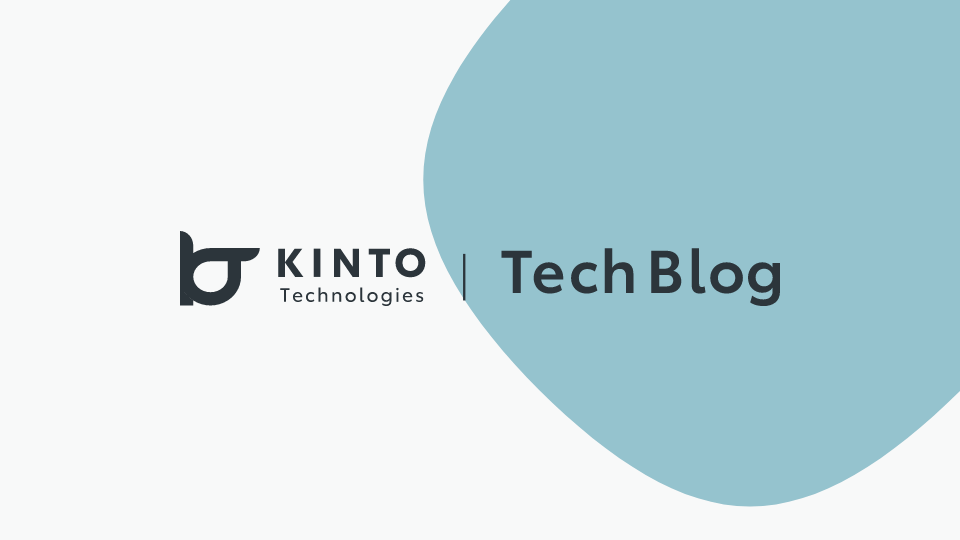
こんにちは、人事グループ組織人事チームのHOKAです。
本日は、2024年3月に10X innovation culture programを受けたその後のお話をいたします。
はじめに
KINTOテクノロジーズ(以下、KTC)では、イノベーションを生み出す組織環境づくりに挑戦しています。現在はまだその「過程」であり、試行錯誤をしていますが、これから10X innovation culture programを導入しようと考えている方や、何かイノベーションを起こす組織を創りたいと考えている方に読んでもらえたら幸いです。
7月:自分たちで10X innovation culture programやってみた
3月にGoogleオフィスで10X innovation culture programを受ける前から、決意していたことがあります。
それは、10X innovation culture programを自社で実施していくということ。
「3か月ごとに実施しよう。アセスメント結果を見よう。」
「2回目からは自分たちで10X を実施しよう。」と誓った2024年3月の私たち。
夏の開催に向け、再びあわっちとHOKAは動き始めました。
まず最初に行ったのが、ファシリテーターを決めること。
今回はGoogleの方はいないので、自分たちで担当しなくてはなりません。
Slackで声をかけたところ、4人のメンバーがファシリテーターに立候補してくれました。
10X innovation culture programは、大きく分けて下記3つのコンテンツを実施します。そして、参加者が自分だったらどうするか?KTCだったらどれが良いかを考え、実行していきます。
【1】10Xの動画を視聴し、10Xとは何かを理解する「事前MTG」
【2】アセスメント結果から「現在地」を知る
【3】10Xの要素をテーマにディスカッションする
これらを実施するだけです。
それなのに、すごく難しかった!!のです。
難しかったポイント
- 【時間配分】当日のプログラムは2時間必要なのか、3時間必要なのかさえ分からない
- 【コンテンツ】初めて参加する人と2回目に参加する人、2パターンいるがどうやって進めたら良いのか
- 【品質】「10Xとは」を語るシーンが重要なのだが、いざKTCメンバーが話すと、ただ読み上げているだけになってしまう
等々、基本の「き」から手探り状態でした。あわっちとファシリテーターの4人と一緒に、3月の研修をふまえて「たぶん、こうだよね」と話し合いながら何とか実施したというのが本音です。
コンテンツごとに振り返り
【1】動画を視聴し10Xとは何かを理解する「事前MTG」
前回と同様にzoomで実施。ファシリテーターが「10Xとは」を説明し、その後の10Xの動画を再生。最後にアセスメント回答をしました。
- なぜか3月ほど盛り上がっていない。
- もしかしたら、「なぜ10XをKTCが学ぶのか」が足りないのかも?
と運営側では感じていました。
【2】アセスメントの結果から現在地を知る
そして、2024年7月2日、10X innovation culture programを室町オフィスで開催しました。
Osaka Tech Lab.(大阪オフィス)や、名古屋からも参加し、総勢39名。初めて参加した人も、2回目に参加する人もいました。
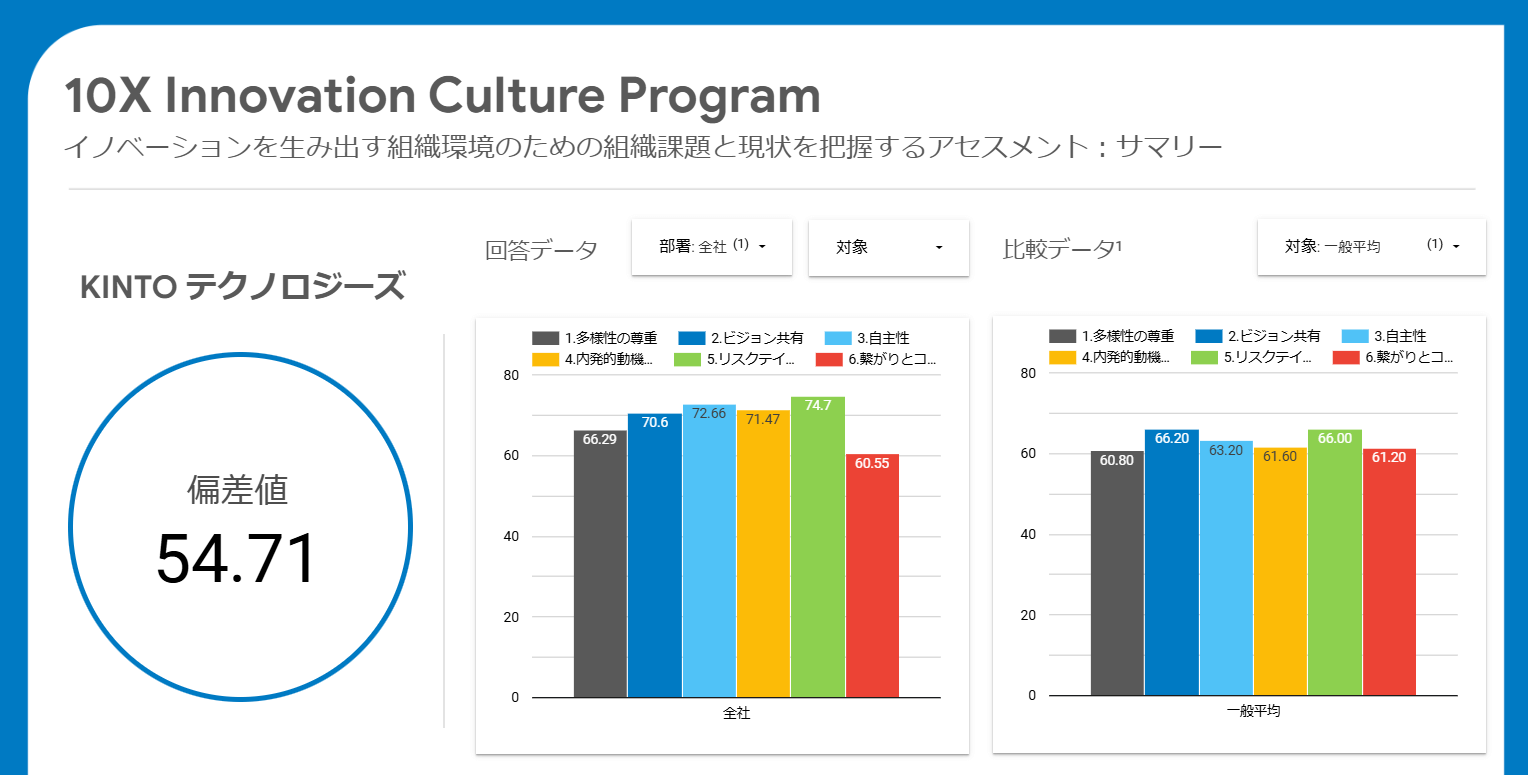
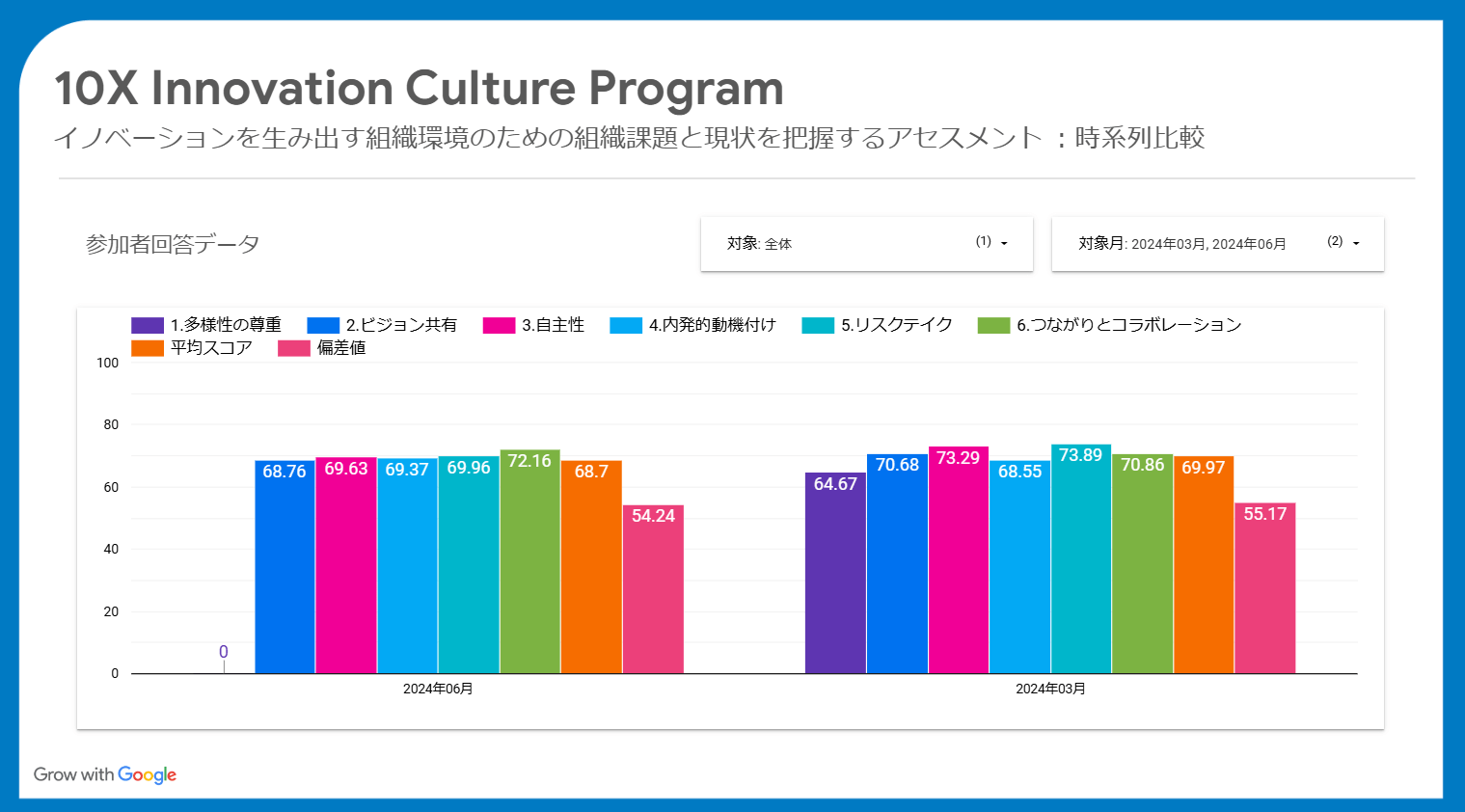
事前にみんなが回答したアセスメントの結果を見て、前回よりも上がった/下がったを報告したが、なんだか反応が薄い。
- 前回(3月)から今回(7月)まで何かに取り組んだ訳ではないから、数値に思い入れが持てないのかも?
- アセスメント結果を共有されているだけでは、まだ良い・悪いは判断できないのかも?
と運営側では仮説を立てました。
【3】10Xの要素をテーマにディスカッションする
続いて、「この3か月間の振り返り」をディスカッションしました。
全く覚えていない人がいたり、初めて参加した人は「動画を見ただけだから、何をしたら良いか分からない」という人も。前回、Googleオフィスで行った時には、スムーズにディスカッションが進んでいただけに、運営側としては想定外の事態でした。(今、思えば当たり前なんですけど)
その後、10Xの要素の1つ「自主性」についてディスカッションを実施。前回と同様にグループに分かれて課題から書き出し、解決策をディスカッションしていただきました。
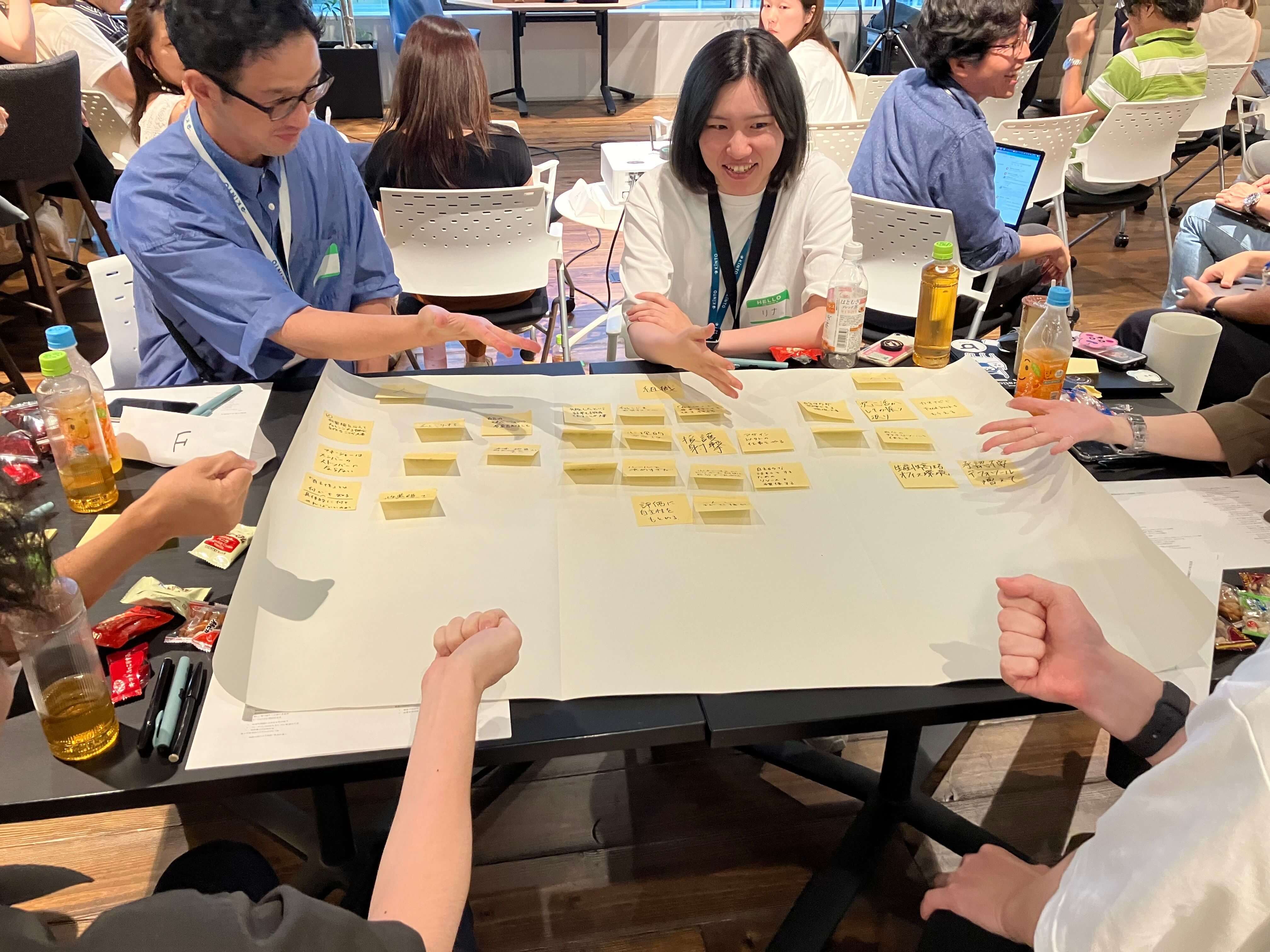
- 3か月間、特に10Xを意識した行動してない人がいる
- なぜか前回よりもディスカッションしづらい雰囲気がある
という発見がありました。
実施後アンケート
前回に比べ、3や2の数が増え、1が付いた項目もありました。
推進のモチベーションも下がっています。
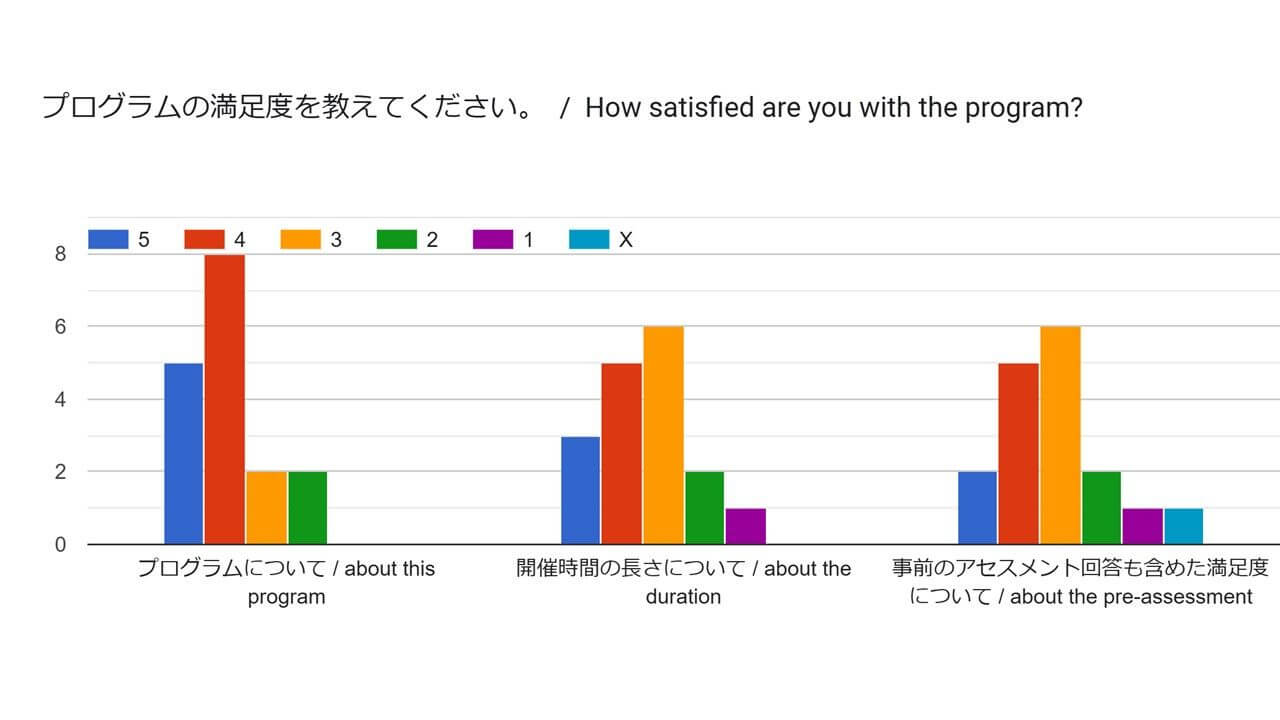
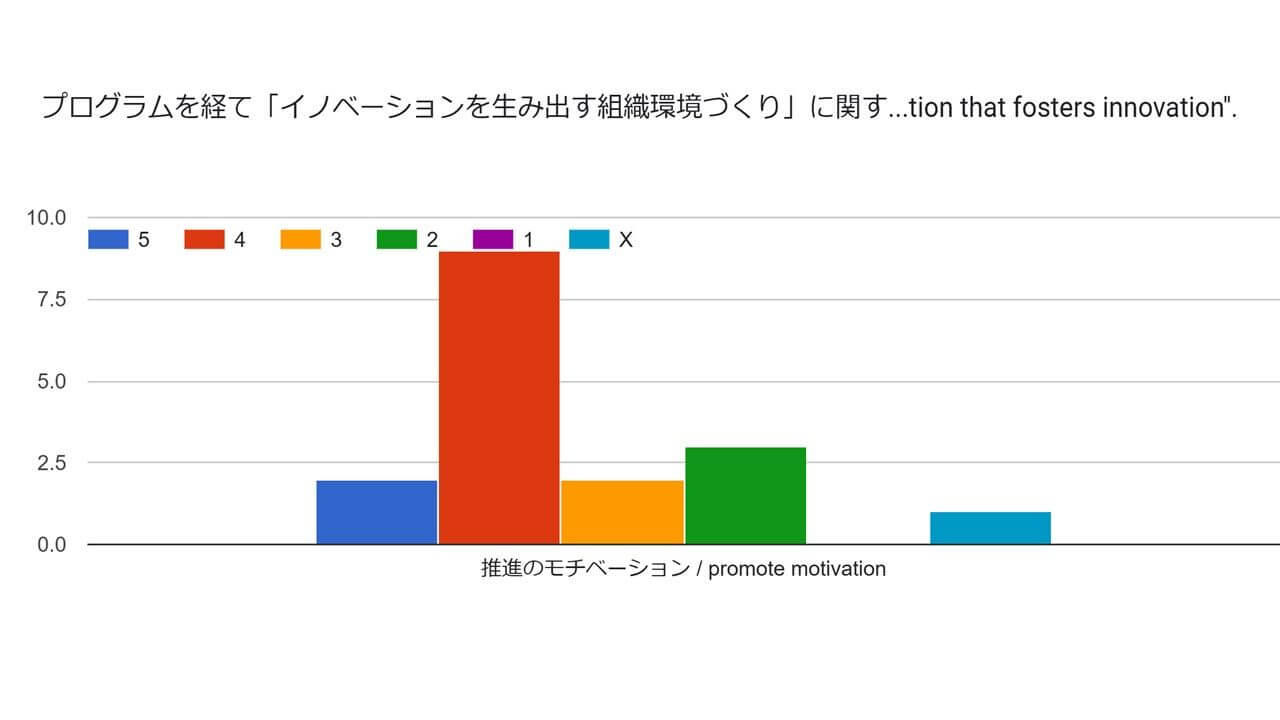
また、アンケートコメントにおいても、参加者の方から以下のアドバイスをいただきました。
- 全体の感想
- 運営お疲れ様でした!楽しい会になりました。
- 今のところ特になし
- ぜひ他の組織でも行ってほしいです。他の人の考えが知れるだけでもとてもいい活動
- 前回の内容に関するフィードバック
- 前回の内容を簡単に説明して欲しかった。前回参加できていないかたが置いてきぼりの時間があった。
- 前回の課題の記憶取り戻しに時間を要したので、事前に振り返りの時間を作れたらと思った。
- 前回のほうがディスカッションが盛り上がった気がした、場を積極的に回す人がいなかったし(自発性の欠如)事前準備をきちんとしておらず、入り込むまでに時間がかかった。
- 時間・スケジュールに関するフィードバック
- 時間的には短かったよね。もっとグループワークしてディスカッションする時間があったほうがよかったかも。
- タイムスケジュールがタイトすぎる(大体その通りいかないので余裕持たないと。分単位は危険すぎる)
- 確保時間の問題かな?(目的はこれだったと思うので、流れ的にネクストアクションとまではいっていなかった気がする)
- グループディスカッションに関するフィードバック
- グループディスカッションのメンバー選定について、チームを横断したメンバーではなく、実際の業務で組んでいるチームメンバーでやっても良いかなと
- 前回、今回のように他チームのメンバーと協議することは刺激的であり、新鮮です。ですが業務に即した結果が出にくいということも感じています。そこで同じチームメンバー同士で改めて10Xについて会話することも良いかなと思いました。
- ワークショップの進行・運営に関するフィードバック
- アイスブレイク(自己紹介)などの時間が少なすぎ。ワークショップを始めるにあたって、知らない人同士の環境を緩めるには非常に重要。自己紹介も終わらなかった。
- ワークショップの質問が抽象的で回答の出し合いに困っていた
- おそらく、このワークショップのゴール設定がなされていなかった可能性がある(運営側が)
- 参加する方も今回これを持ち帰ってねという握りをはじめにしておいた方がいいとおもう
- 内容の理解・フォローアップに関するフィードバック
- 初参加でしたが内容としては既習者向けの感があり、全体としてぼんやりとした内容という印象を受けました。
- 内容を絞ってコンパクトにするか、尺を拡大してしっかりした説明を加えたほうが良いのではと感じました。
- その他
- 配布された紙(回答コメント)がなんのためか分からない
- デスク毎にリーダーを決めてもらうことをはじめにした方がよさそう
- 自発性とチーム内の話し合い
- また前回を振り返った時にアクションが少なかったので、定期的にチームでも話し合いの時間をもうけたい
- 内発的動機に興味あります。自立性と組み合わせれるとより一層のスピード感を持てると思います。
さらに、10X innovation culture program実施後にファシリテーターメンバーで集まって、振り返りを実施。アイデアがたくさん集まりました。
さて、どこから手をつけるべきか?
そんな中、Googleの方から Google Cloud Next Tokyo'24で登壇する機会をいただきました。
<<中編へ続く>>
関連記事 | Related Posts

My story about participating in the 10X Innovation Culture Program at Google
![Cover Image for Overcoming Challenges in the In-House Rollout of the 10X Innovation Culture Program [Part 2]](/assets/common/thumbnail_default_×2.png)
Overcoming Challenges in the In-House Rollout of the 10X Innovation Culture Program [Part 2]

Attending the 10x Innovation Culture Pitch Practice Session at Google

10X innovation culture program 内製化における苦悩と挑戦【前編】

Google で 10X Innovation Culture Program を受けた話
![Cover Image for [Learning Roadside Station Podcast] The Google 10X Program](/assets/blog/authors/aoi.nakanishi/2024-12-podcast/podcast_10x.jpg)
[Learning Roadside Station Podcast] The Google 10X Program
We are hiring!
【PjM】KINTO開発推進G/東京
KINTO開発部 KINTO開発推進グループについて◉KINTO開発部 :58名 - KINTOバックエンドG:17名 - KINTO開発推進G:8名★ ←こちらの配属になります - KINTOフロントエンドG:19名 - KINTOプロダクトマネジメントG:5名 - KI...
【フロントエンドエンジニア(リードクラス)】FACTORY EC開発G/東京・大阪
KINTO FACTORYについて自動車のソフトウェア、ハードウェア両面でのアップグレードを行う新サービスです。トヨタ/レクサス/GRの車をお持ちのお客様に、KINTO FACTORYを通してリフォーム、アップグレード、パーソナライズなどを提供し、購入後にも進化続ける自動車を提供するモビリティ業界における先端のサービスを提供します。
